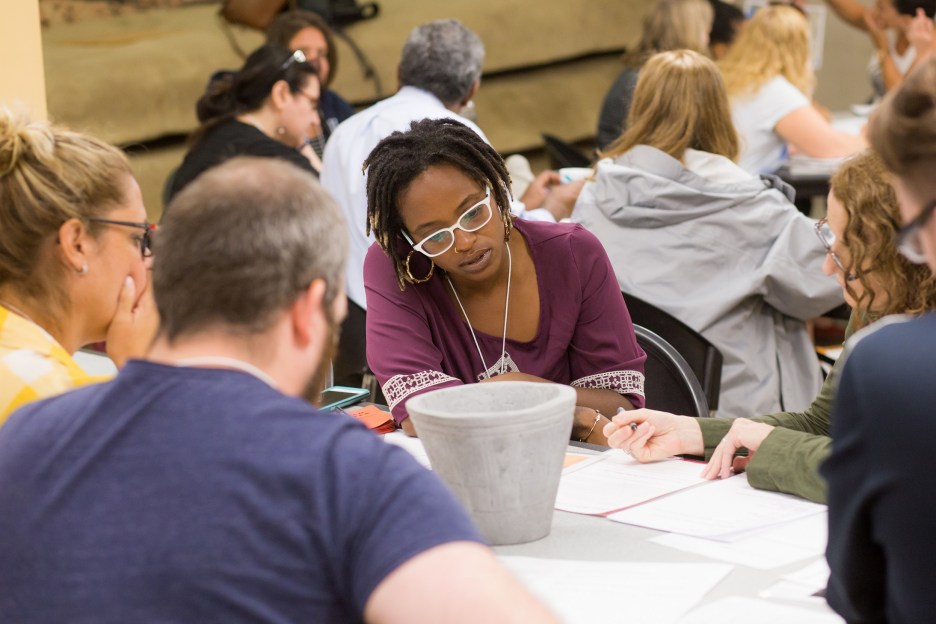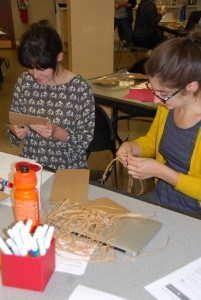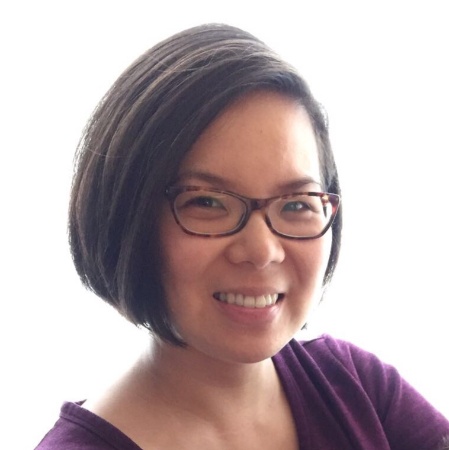
How can we make ancient history relevant to our students today and their learning in the future? How can museums be an agent for innovation while supporting the learning goals of a K-12 school audience?
Finding relevance and building connections for museum visitors are age-old issues for museum professionals. This this end, the Oriental Institute of the University of Chicago offers the new STEAM-based Teacher Cohort Academy, a year-long educator professional development initiative. The Academy provides local K-12 teachers a platform to explore tools and instructional approaches that balance the needs for students’ academic learning and 21 st century skill building through archaeological inquiry.
Problem-solving for the future through understanding ancient history
The overarching goal of the Teacher Cohort Academy is to enhance teachers’ self-efficacy in utilizing museum resources for teaching various subjects and increase their competencies in curriculum development that aligns with the national standards. The program primarily targets educators at middle- and high-school levels. It engages teachers to get inspiration from ancient history so that they can effectively guide their students in imaging and addressing future problems while learning science, technology, engineering, art, and mathematics (STEAM).
A STEAM-based approach in the training program opens up multiple perspectives among the educators in uncovering the challenges and opportunities a community or nation in the past might have faced. With our museum collections of archaeological artifacts excavated by the University of Chicago’s faculty, a group of sixteen teachers from eight different schools pair up with a colleague to use the collections as a jumping-off point to develop a cross-interdisciplinary unit. Through a series of five monthly sessions, educators visit the Oriental Institute museum galleries alongside an archaeologist and an Egyptologist at the University to interrogate daily problems that ancient Mesopotamians and Egyptians encountered and the solutions they tried. Thus, educators ask questions of common threads and connections to other cultures. Those problems include, but are not limited to, how did people measure and use time? How did people engage in fair trade? How did people ensure they were remembered of after death?
Archaeology – A gateway to interdisciplinary learning
“Museums as labs that can inspire the next generation of artists, scientists, engineers and their teachers” (A City-Level Approach to Remake Learning). A university museum of archaeological collections like the Oriental Institute offers students and their teachers a unique opportunity to consider life in ancient times from artistic, scientific, and technological standpoints.
Archaeology is inherently interdisciplinary, involving studies ranging from history, geography, literacy, and art, to science. STEAM is a natural framework for our educator professional development. Each of the training sessions starts with an essential question with an emphasis on student skill building:
- For session one on “Inquiry and Discovery: Teaching through Primary Sources and Archaeology”: How can we engage students in making inquiry and discovery through primary sources and archaeology?
- For session two on “Science and Technology in Ancient Mesopotamia and Egypt”: How can we engage students in making inquiry and discovery through experimentation and revision?
- For session three on “Engineering and Mathematics in Ancient Mesopotamia and Egypt”: How can we engage students in making inquiry and discovery through collaboration?
- For session four on “Art in Ancient Mesopotamia and Egypt”: How can we engage students in making inquiry and discovery through observation, visualization, spatial thinking, and creative problem-solving?
- In session five which is the curriculum showcase, teachers practice peer leadership through demonstrating and leading a breakout session at the Educator Mini-Conference at the Oriental Institute. The event is open to all educators.
Throughout the training sessions, teachers study selected artifacts in the Oriental Institute’s collections through guided gallery tour according to the theme of the day. They have time to sketch curriculum ideas based on what they observe and learn in the tour, as these are layered with content knowledge about the role of archaeology. Additionally, teachers participate in hands-on projects associated with the theme in the respective training session.

MAKERSPACE AT WORK–TECHNOLOGY UNDER OUR FEET ACTIVITY–TEACHERS COLLABORATIVELY MAKING A SANDAL BASED ON THE INSPIRATION AND RESEARCH FROM THE ORIENTAL INSTITUTE MUSEUM COLLECTIONS.
An example of Makerspace with an ancient twist – Our version
One of the hands-on projects teachers explore is called Technology Under Our Feet, in association with the “Engineering and Technology in Ancient Mesopotamia, Egypt, and Beyond” training session. Through investigating footwear technology and design in ancient Egypt and Nubia, the objective of the project is to demonstrate that humans continue to invent and innovate to improve their quality of living through the application and experiments in science, technology, and art. To encourage creative problem solving and evidence-based research practice, participants are challenged to make a model of a sandal or shoe that meets the needs of a person, with consideration of the age/occupation/gender/social status of that person as well as the time period and region in which that person lived. In a group of four, participants need to research the cultural characteristics for the user. The research culminates with hands-on shoe making using recycled materials such as cardboard, scrap tissue paper, toilet paper rolls, etc. At the end of the projects, participants report and make an argument for how the choices of the recycled materials represent the actual resources that should be used.
The project challenges the participants in making sound decisions, effective collaboration and interpersonal communications, and quality task performance. An activity extension to integrate digital literacy and technology, participants can use data visualization such as infographics to summarize their collaborative work process and/or explain their design.
To learn more about the Teacher Cohort Academy and our methodology, visit: http://oi.uchicago.edu/teachercohort
References:
A City-Level Approach to Remake Learning, by Gregg Behr. Building the Future of Education: Museums and the Learning Ecosystem. Center for the Future of Museums.
https://www.aam-us.org/docs/default- source/center-for- the-future- of-museums/building- the-future-of- education-museums- and-the- learning-ecosystem.pdf?sfvrsn=2
Supporting Learning in Museum: Makerspaces: A National Framework. Museum (September/October 2016). American Alliance of Museums. P. 19–24.
Carol Ng-He is the School & Community Program Manager at the Oriental Institute of the University of Chicago. She serves on the Education Committee of American Alliance of Museums, the Editorial Review Panel of the Journal of Museum Education, and the Museums & Exhibitions Committee of the Archaeological Institute of America. She is the recipient of 2012 Promising Leadership Award by the Association of Midwest Museums and 2012 Illinois Museum Art Educator of the Year Award by the Illinois Art Education Association.
@orientalinst #OrientalInstitute








